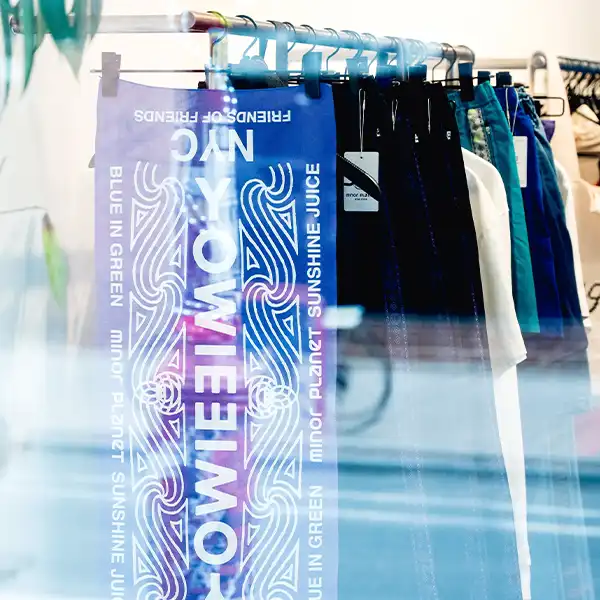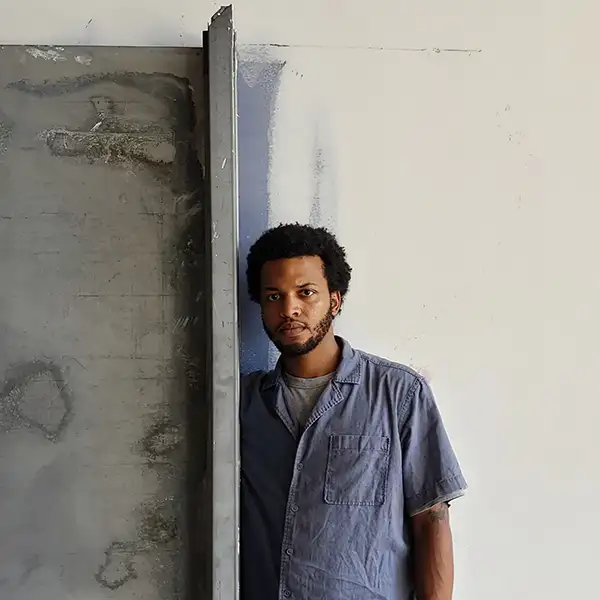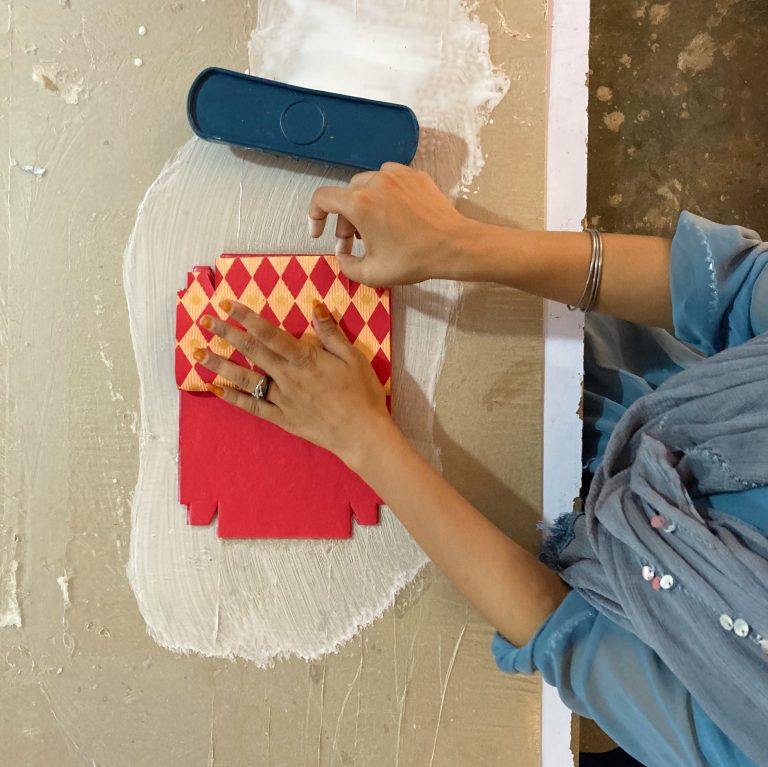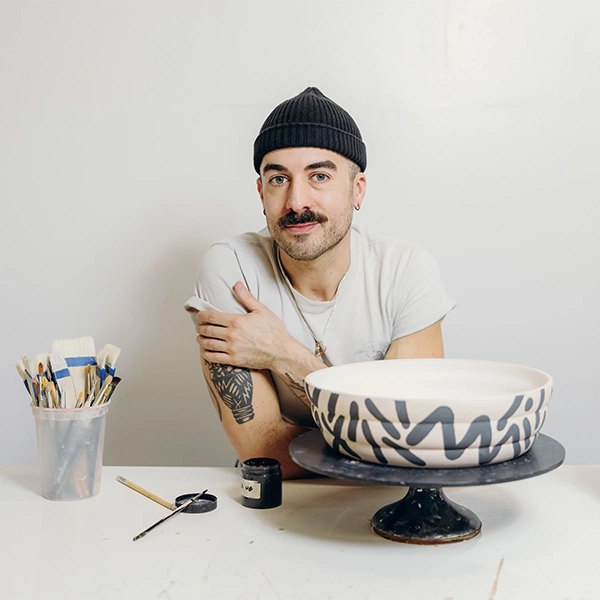Philadelphia Artist James Paris on Yowie, Album Covers, and Creative Process
James Paris is a Philadelphia-based artist and graphic designer whose playful, clipart-inspired work can be found throughout the city, from collaborations with YOWIE and wayfinding at Yowie Hotel to projects at the Philadelphia Museum of Art. His style marries function with fun, drawing inspiration from early computer clip art and hours spent experimenting on Microsoft Paint. In this interview, Sarah talks with James about design inspiration, album covers, collaboration, and advice for freelance designers.
Words by Sarah Inocencio-Miller for Stories at Yowie
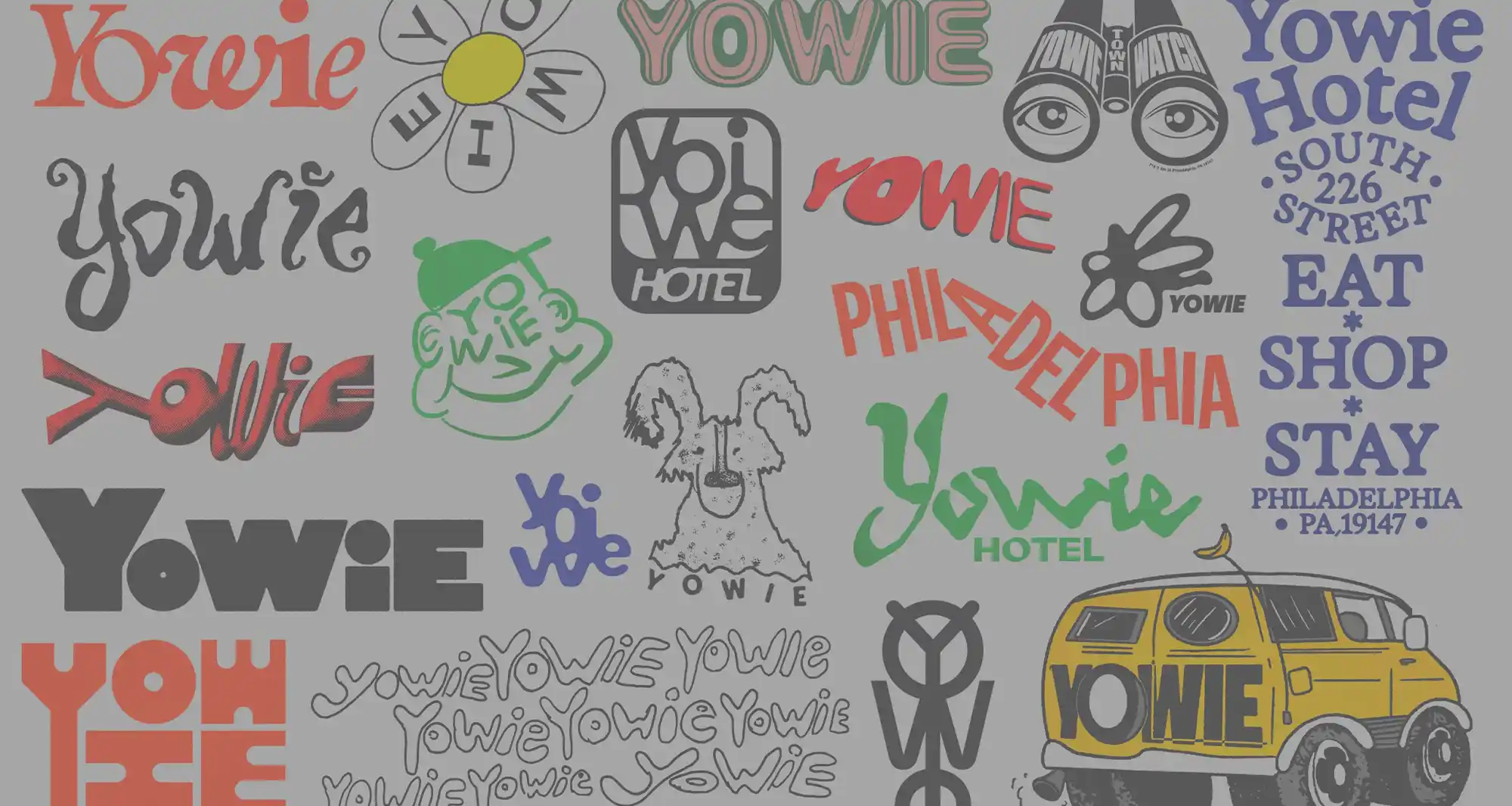
Highlights from Our Conversation with James Paris
- James Paris shares how his playful design style grew from early experiments in Microsoft Paint to professional projects in Philadelphia.
- His collaborations with Yowie span from the daisy tote to wayfinding at Yowie Hotel, blending creativity with practicality.
- At the Philadelphia Museum of Art, James balances institutional design systems with personal creativity.
- He draws inspiration from archives, album covers, and vintage media, remixing the past into new graphic design.
- For freelancers, James emphasizes the importance of consistency, confidence, and keeping the joy in creating.
Design Inspiration and Early Work
Sarah Inocencio-Miller (SIM): When did your interest in graphic design begin?
James Paris (JP): I started taking graphic design more seriously in 2015 at Drexel, but I’ve been making art since I was a kid and have never stopped. I grew up using the computer for everything, including art. Messing around on Photoshop today is no different to playing around in Microsoft Paint on my childhood computer. In high school I learned about Photoshop and would make memes for my friends. My first real graphic design projects were actually album covers I created on Photoshop for music I’d rip and upload to iTunes. I could spend hours doing that. When it came time to think about college, I knew I wanted to pursue graphic design, so Drexel is where I ‘really’ became a designer but it feels like something that I’ve been working towards my whole life.
“My first real graphic design projects were actually album covers I created on Photoshop for music I’d rip and upload to iTunes.”
SIM: Do you feel that between you messing around on Microsoft Paint, to Drexel, to the present, that your style has shifted?
JP: I can’t always be making super wacky things. I work with two design brains now – solving a problem while still making stuff that’s fun. When I worked on the wayfinding for YOWIE Hotel, we wanted it to look cool, while getting numbers on the doors that were both readable and visible.
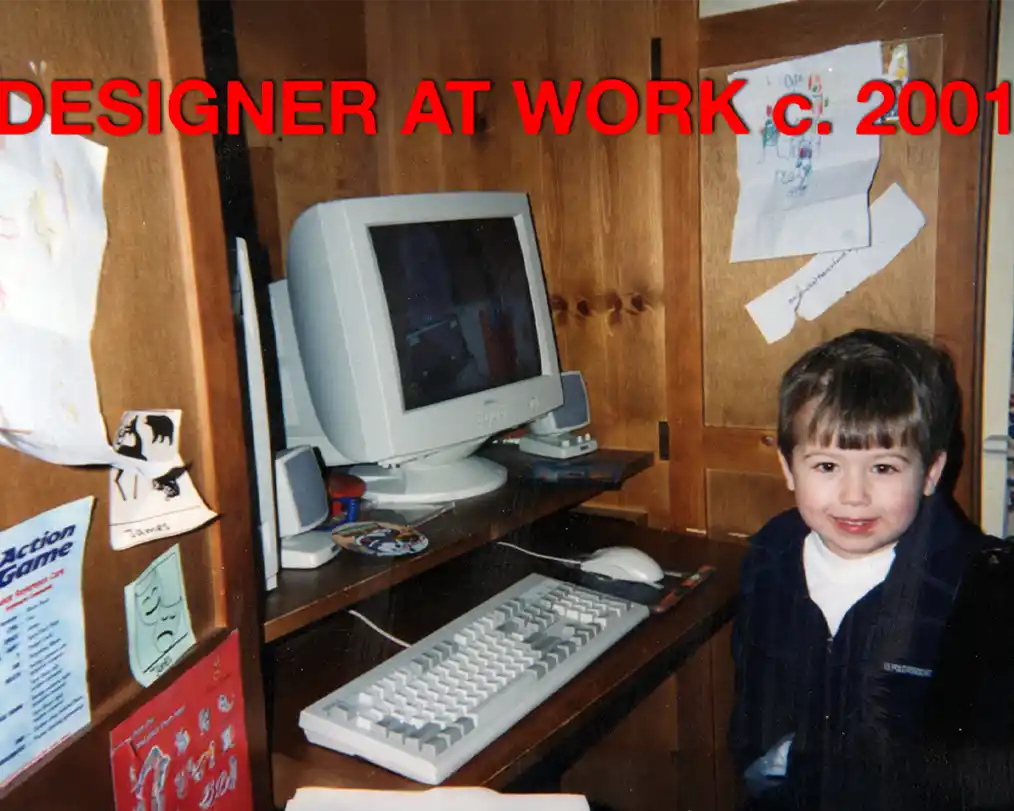
SIM: Striking a balance between functionality and the creative process.
JP: Exactly. It’s in between those two mindsets where I’m usually designing.
Collaborating with Yowie
SIM: You’ve contributed a lot to the brand identity for YOWIE over the years.
JP: Shannon’s been good to me. It started when I was in college and someone showed me YOWIE’s Instagram. Shannon had put up a story looking for a graphic designer, and I dm’ed her to throw my hat in the mix. We met up, and the first thing we made was the daisy tote and neighborhood watch tee. Since then, we’ve been able to collaborate on a lot of different projects, including really exciting ones like the branding for Wim and YOWIE Hotel. Hopefully, she keeps me around. I’m excited to keep working with her.
“The first thing we made was the daisy tote and neighborhood watch tee. Since then, we’ve been able to collaborate on a lot of different projects, including really exciting ones like the branding for Wim and Yowie Hotel.”
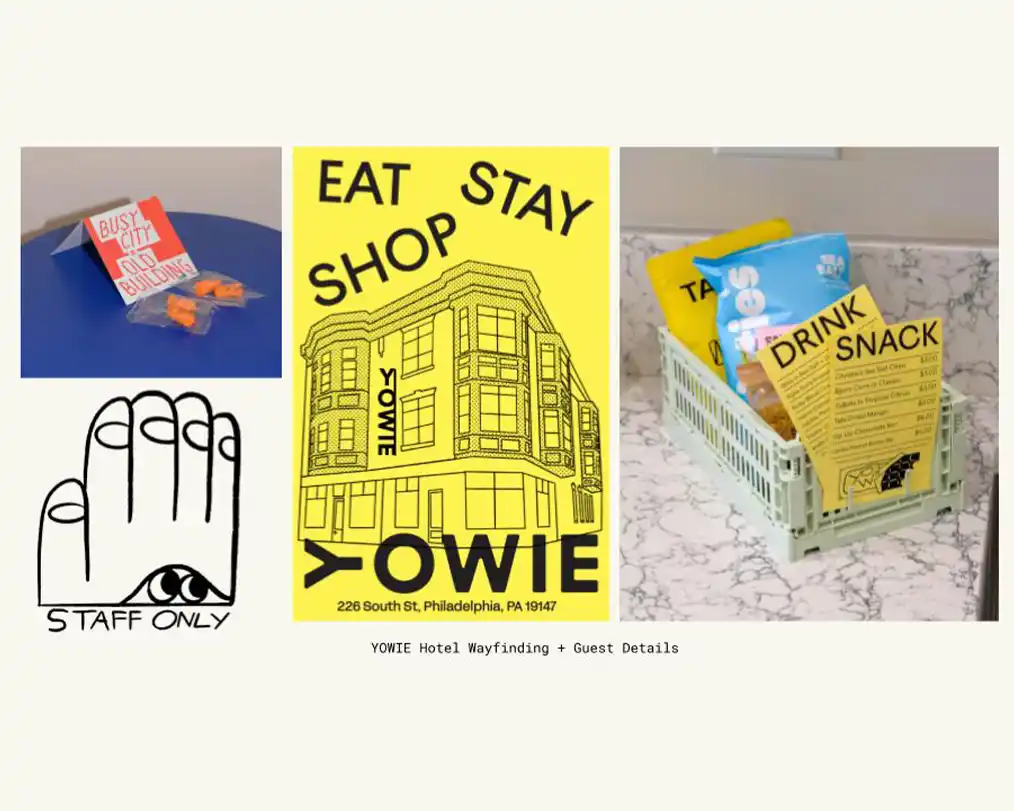
Design at the Philadelphia Museum of Art
SIM: Outside of freelance work, you also work full-time at the Philadelphia Museum of Art. What’s it like to work for such a big institution?
JP: I’ve been at the PMA for four years! It’s been a lot of fun working there because it’s such an established institution. We have our fonts and colors, and it’s nice to have a design job where I’m making things I’m proud of, but can lean on the systems and branding we have in place when creating labels for exhibitions and ads. It frees up my headspace for freelance and personal projects to get more creative and think a little more outside the box.
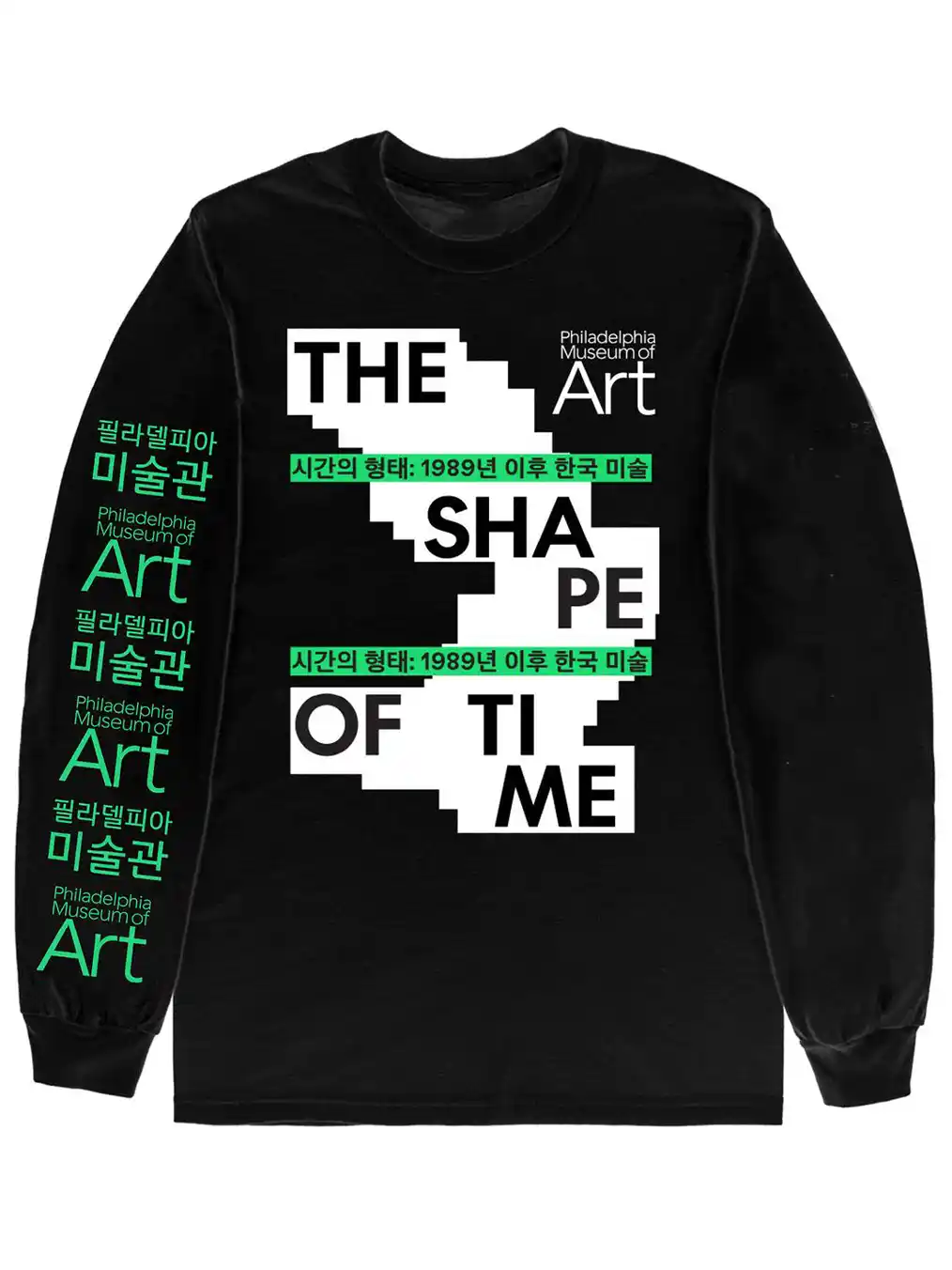
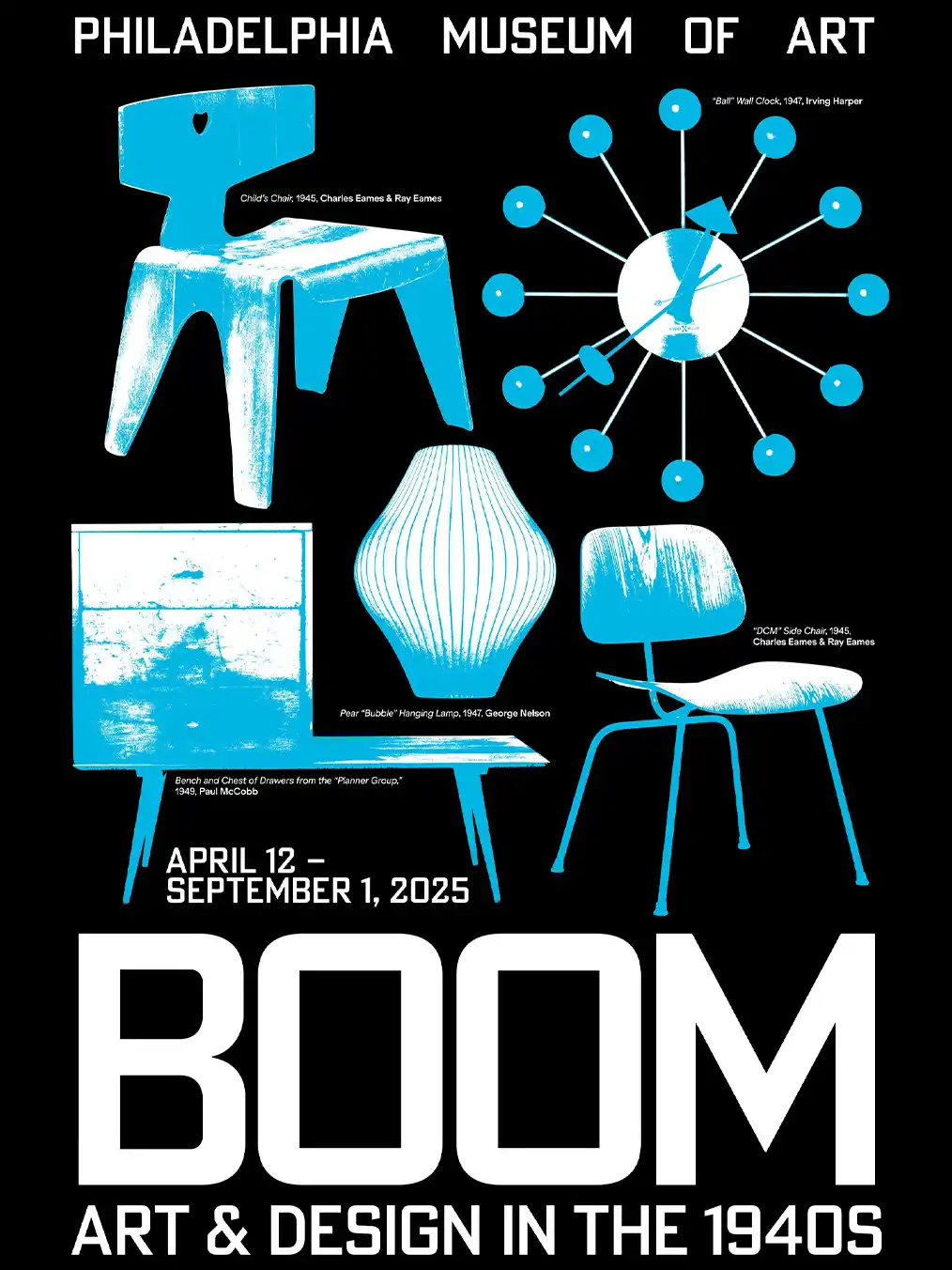
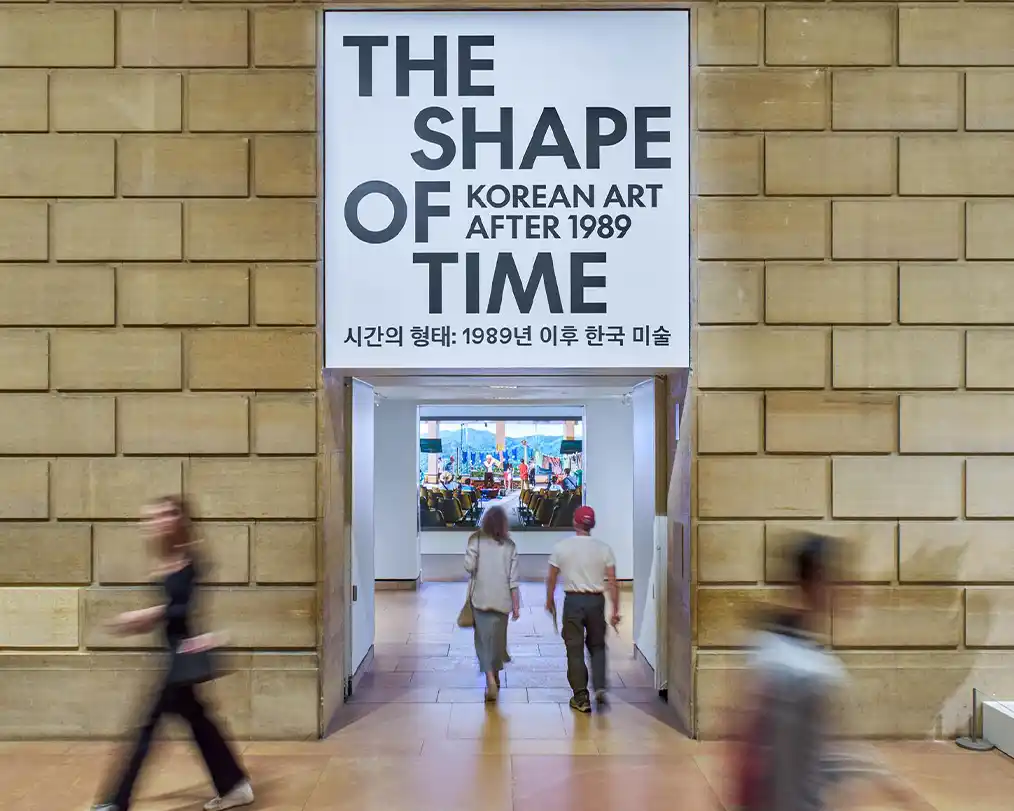
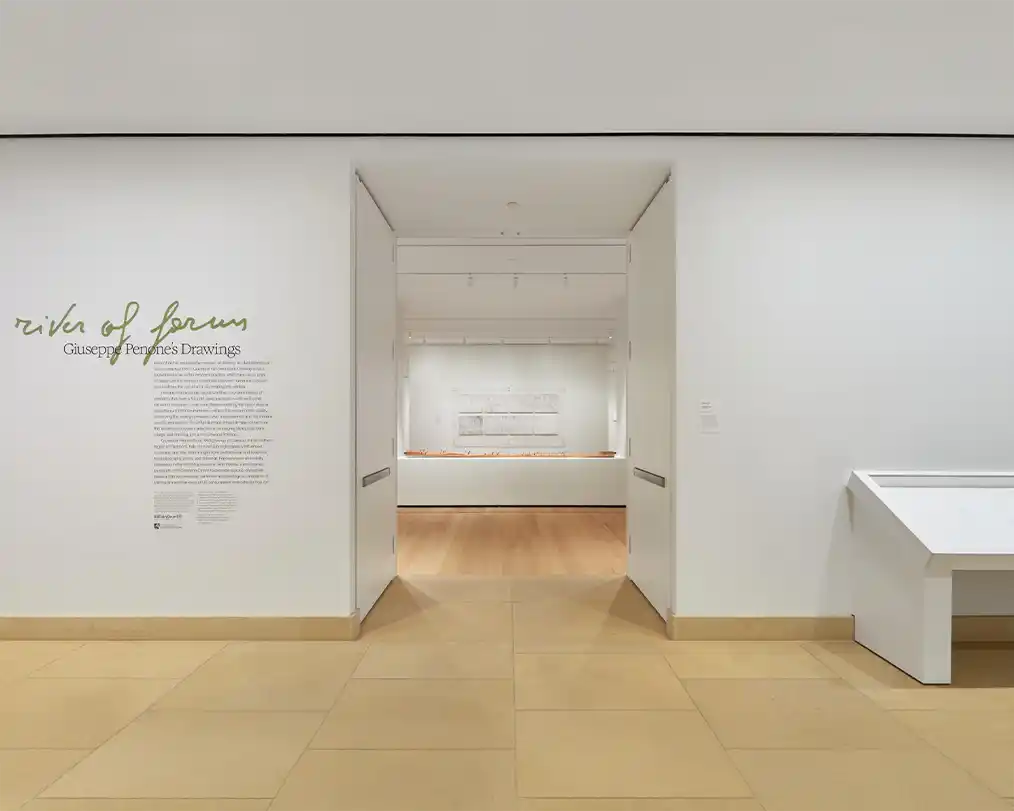
SIM: When you’re creating new branding, what does the beginning of that process look like for you?
JP: I usually start by putting together a mood board using Are.na, where I have a log of inspiration to pull from. I like to have a running mood board that I can go back and refer to for any future project. There are also situations working freelance where the client already has a strong sense of what they’re looking for and has done the work to pull references and styles they’re hoping to achieve. That can make the process a little more streamlined so that I can really hone in and design to that.
SIM: Does the process change once you’ve collaborated with someone a number of times? Is there more of a shared language and understanding with regular clients?
JP: Definitely. I’ve been lucky to work with people like Shannon. She has such a strong vision of what she’s looking for and is a great art director who picks out very specific references that communicate the idea we’re looking for. I can always see what she’s going for, and it feels easy to translate it most of the time. Aside from her strong art direction, she’s also really open to new ideas, which makes the work feel unique. There have been times where I’ll make a couple things she’s asked for, and if I have a random idea floating around, I’ll throw that in the mix, too, and sometimes we end up using it. One example that comes to mind is this long-sleeve shirt we did a couple years ago called the puppy tee. That drawing was something I’d doodled a year or two before in the margins of my notebook. I scanned it, put it on a mockup shirt, and Shannon said, “Oh, that’s so weird; I love it.” It’s great to have a relationship where sometimes we’ll have a very specific aim, and other times it’s flexible enough that I can run with it and try out something weird that ends up working.
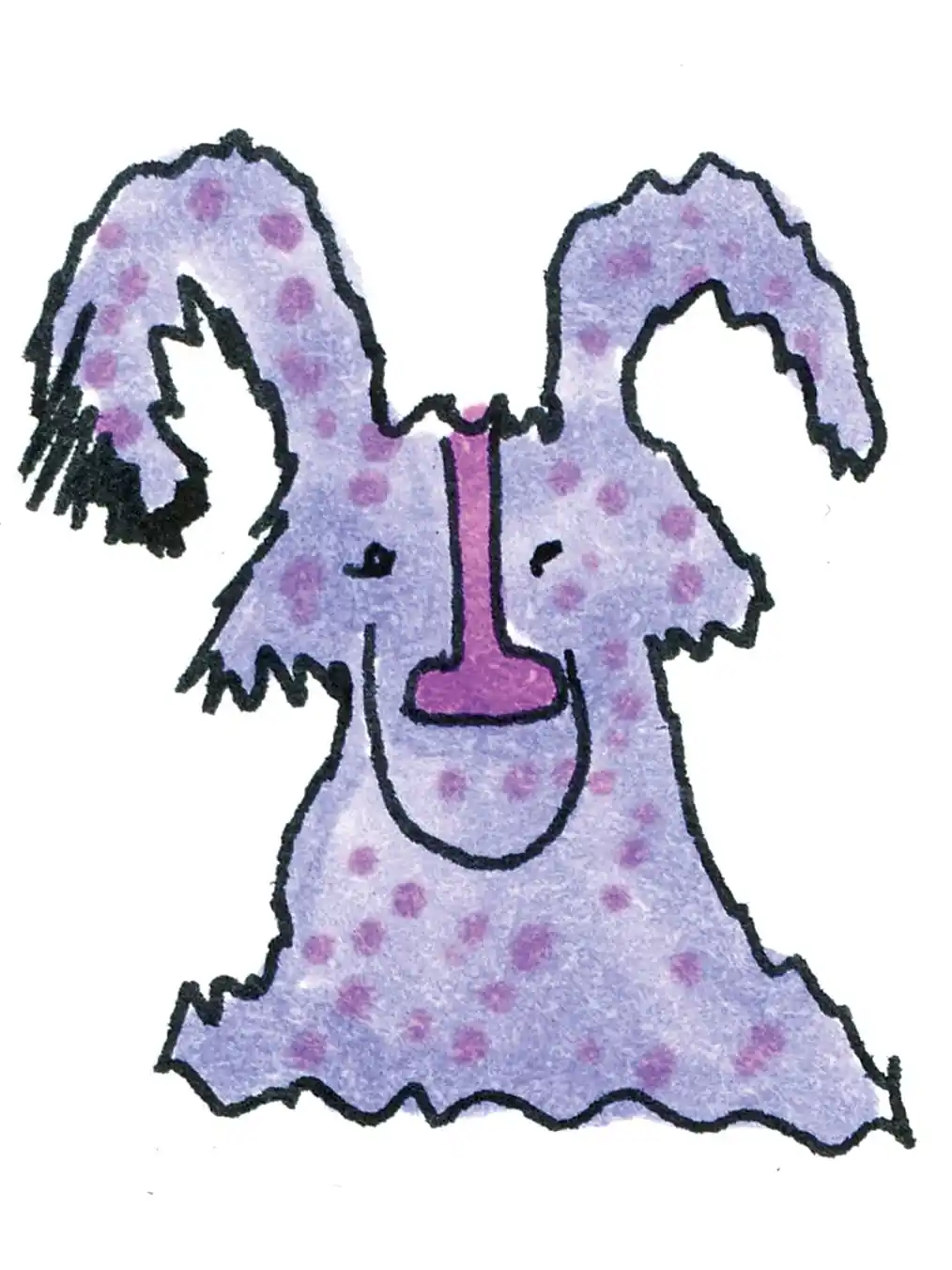
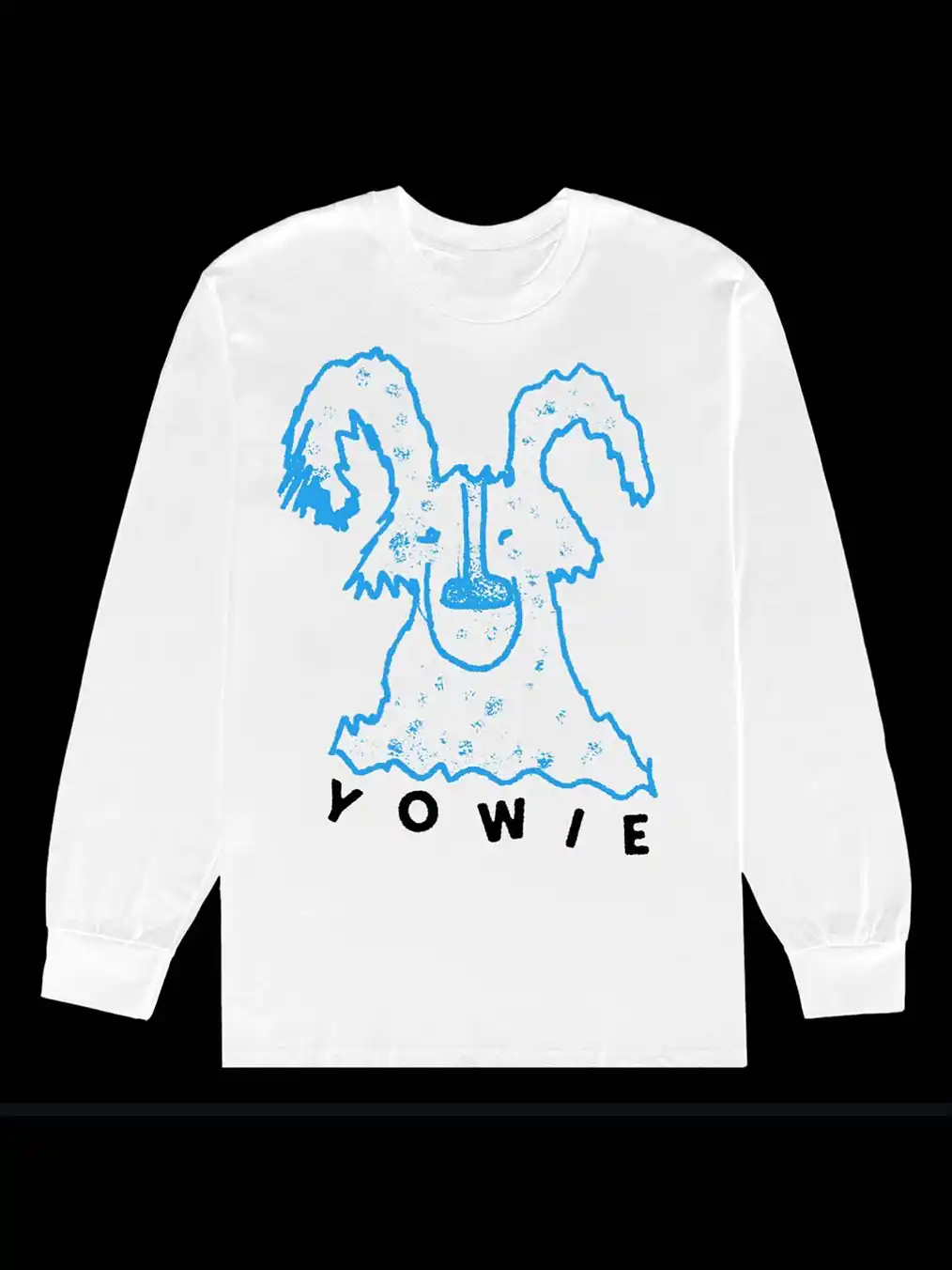
SIM: It sounds like a good balance, being able to work with clients you trust and presenting your ideas that might not be accepted on a more corporate scale.
JP: It’s always nice to be able to do something fun and freaky. I like making merch because it’s usually not permanent, and it gives me the flexibility to be more exploratory.
SIM: I wish some merch would live on a little longer! I have a 90’s Whimsygoth-style YOWIE shirt that I wear all the time.
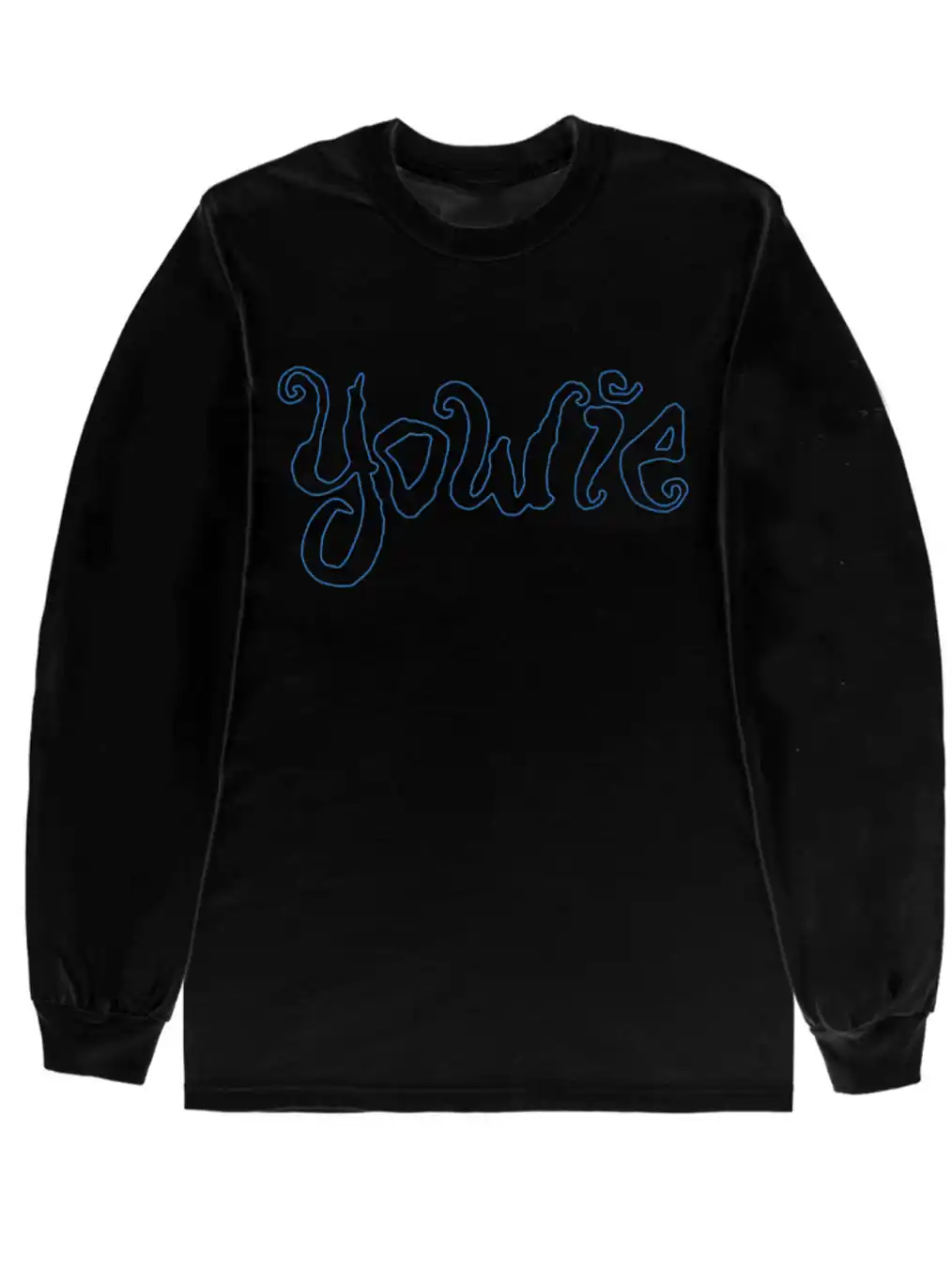
JP: That was one of my favorite collections I did for YOWIE and was part of the same batch as the puppy shirt. Shannon had found a great reference of a Barrington Levy album cover and liked the style of the script. I was able to take the existing typography of his name, chop it up, and write out YOWIE. That’s one of my favorite things about designing. There’s so much past material to recycle and remix that makes graphic design different from illustration. It’s fun to flip an old graphic in a new way. I use The Internet Archive all the time and love to find random books that have been digitized. I get a lot of my weird graphic inspirations from those sources and spend a lot of time sifting through old material. When I can’t get to the library, The Internet Archive feels like the next best thing because it’s full of random, unique books.
SIM: Is there a forgotten relic of the Internet or physical media from when you were a kid that you wish would come back?
JP: I miss the joy of the Internet when everything felt uncharted. I spent a lot of time on YouTube watching random, weirdo videos. Things felt so precious on the Internet, and it doesn’t feel like that anymore. One source of design inspiration that I wish still existed is this great publication called ‘Upper & Lowercase.’ I would spend so much time in the Drexel Library flipping through those magazines. I’ve been able to find a couple online, but I miss having easy access to all that material. I recently found a clipart CD from the early 2000s and was able to rip all the files from it. I don’t know what I’m going to use it for yet, but it’s the type of thing where I know that one day it’ll come in handy.
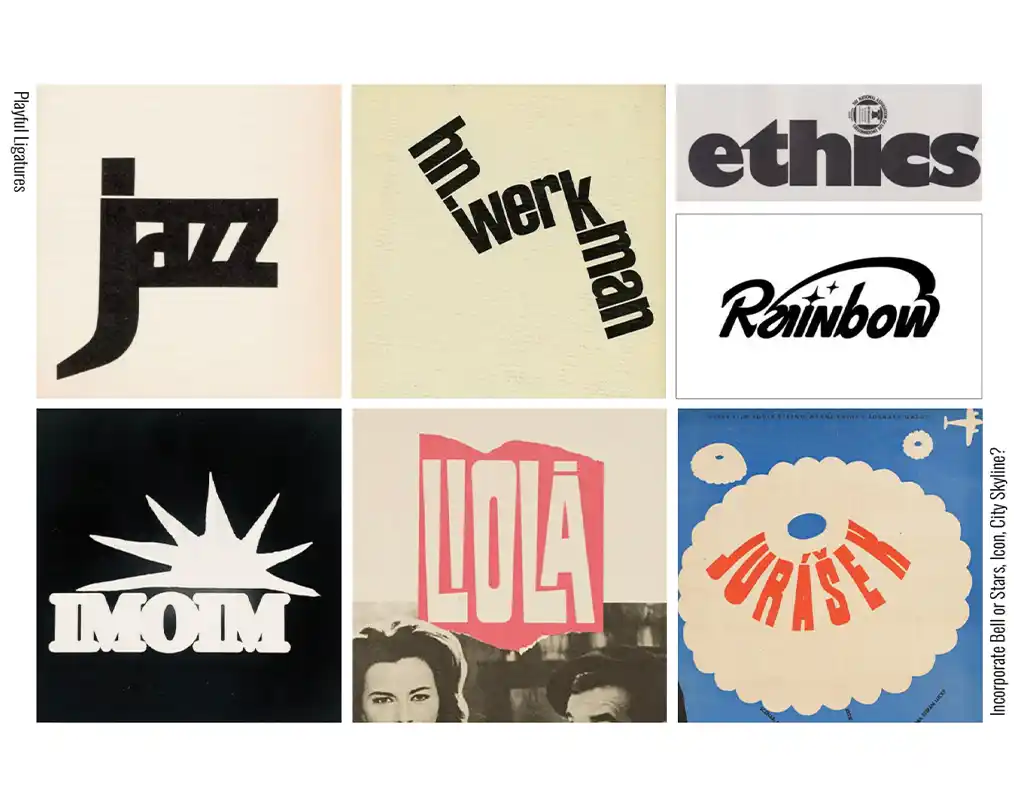
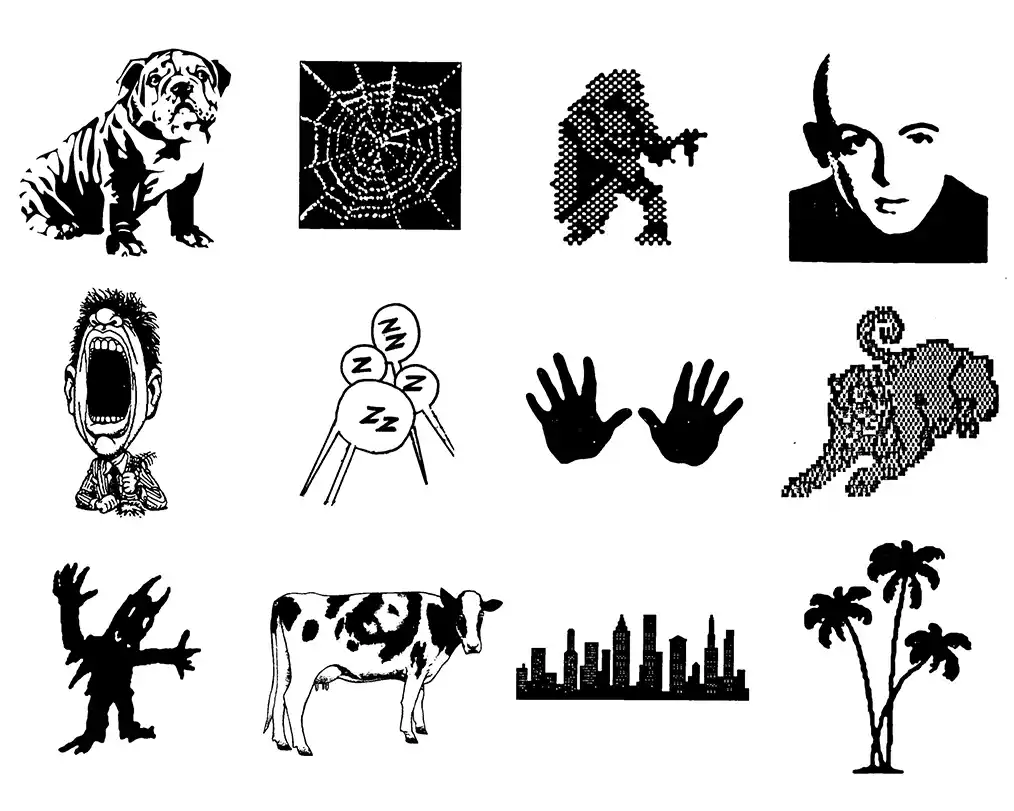
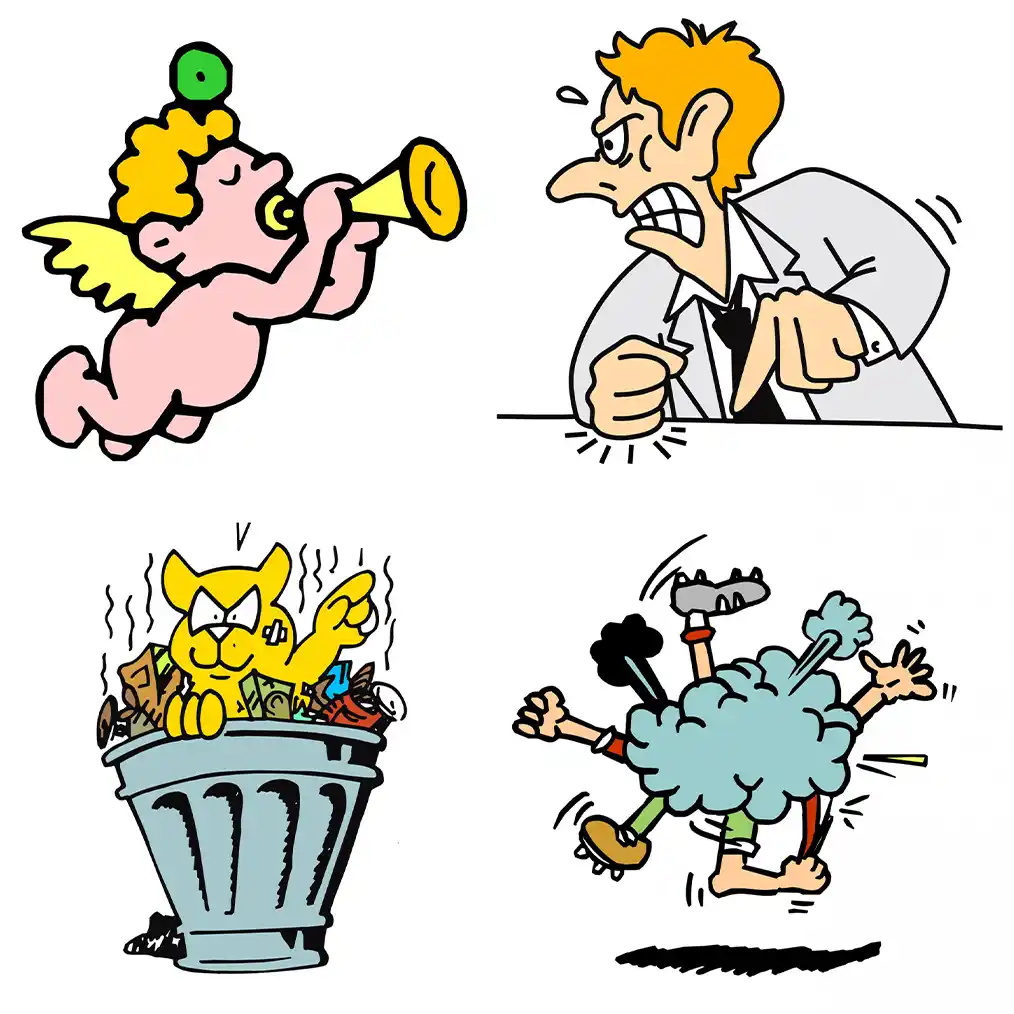
Creative Process and Sources of Inspiration
SIM: Where do you go in Philly for inspiration?
JP: Not to be biased, but I love going to the Philadelphia Museum of Art to see the shows we have up. There’s a Christina Ramberg show up that I worked on, and I find the textures in her work so interesting. Whenever I visit a city, I try to go to museums to see artwork in person. Living in Philly is great because I feel like I’m surrounded by a lot of great, creative people. There’s always something going on.
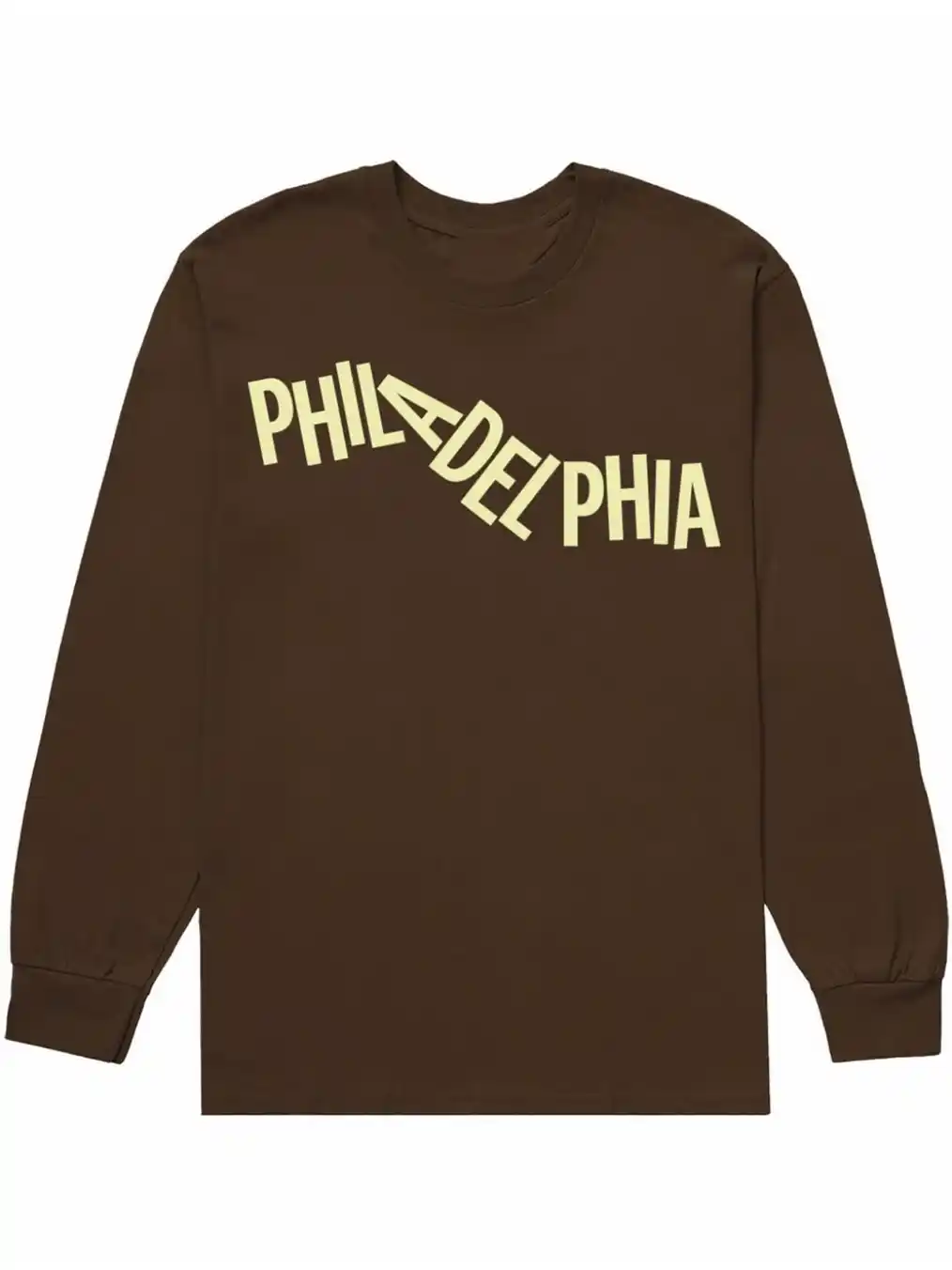
YOWIE x James Paris Collaboration for the Philadelphia Visitor Center
SIM: Is there an artist whose work you’ve been enjoying recently?
JP: I’ve been thinking a lot about David Lynch and his process. What I make is a lot more lighthearted than his work, but hearing him talk about his process is something I relate to. If you have an idea, always write it down, and keep your ideas for later. The key to my design practice is to always be creating, daydreaming, and opening up my mind. I’ve been able to take on so much freelance work because I make things every day, whether it be a doodle or poster. I have a lot of resources and techniques to pull from in my backlog. I think of it like being a boxer in a gym. Creating is just training, training, training. If Shannon reaches out about a collaboration with Nordstrom, but the deadline is two weeks away, I already have a bank of things I’ve been working on that I can refer to. When I’m creating, I don’t think about if I’m happy with what I’m making; I just like the process.
“I love going to the Philadelphia Museum of Art to see the shows we have up. There’s a Christina Ramberg show I worked on, and I find the textures in her work so interesting.”
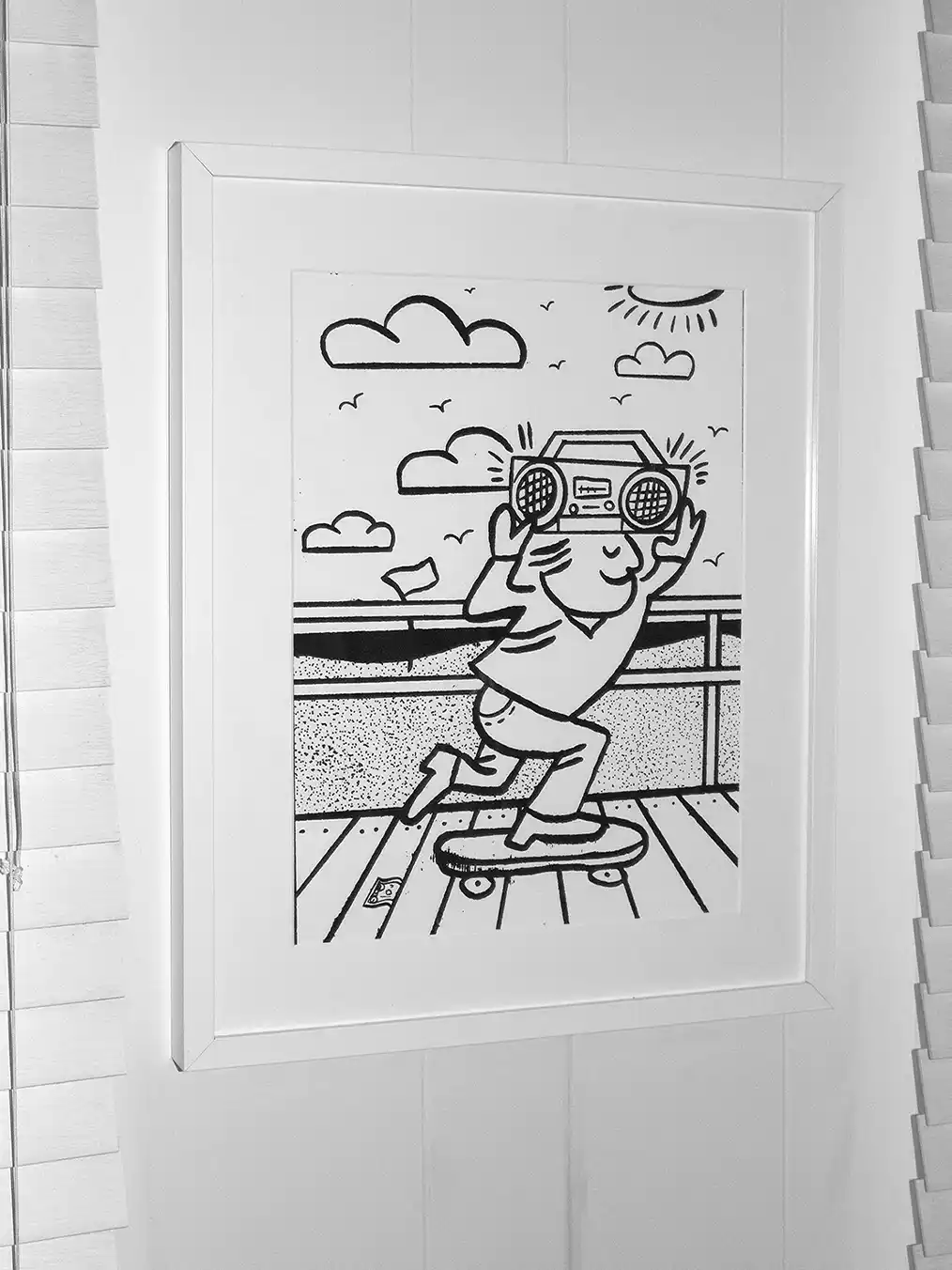
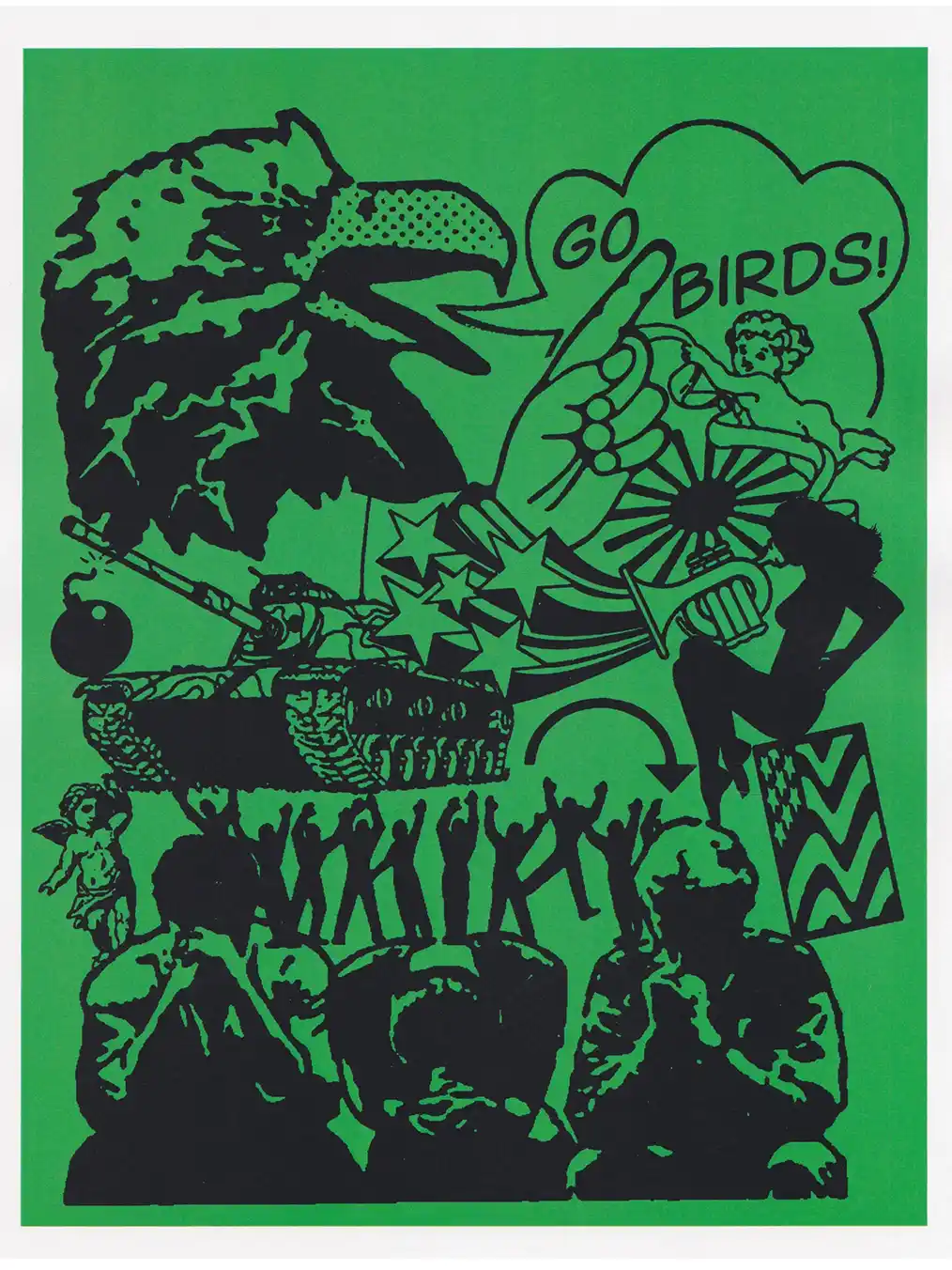
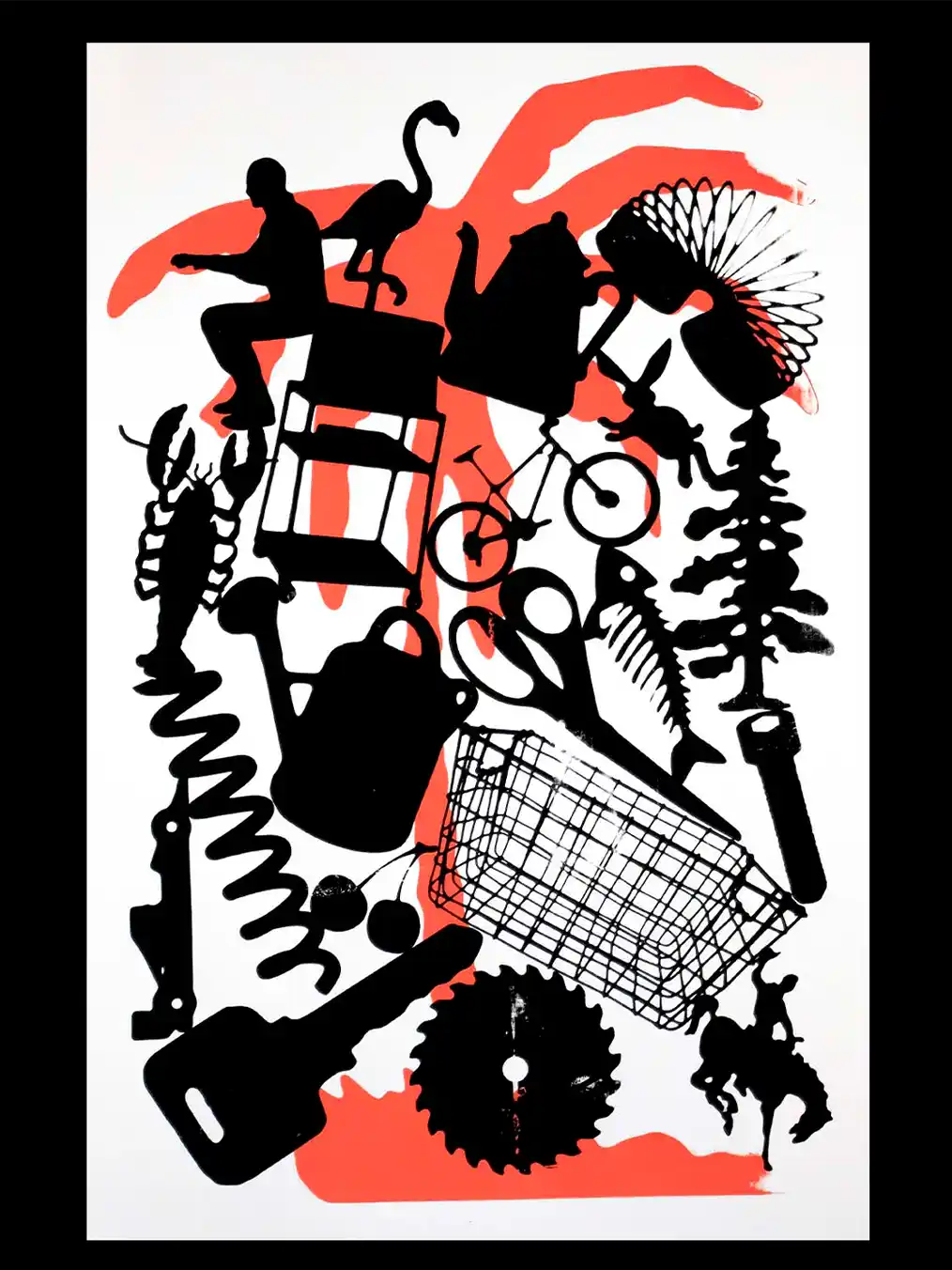
SIM: Do you have a favorite project you’ve worked on so far?
JP: One of my favorite things I’ve ever made was just for fun. I was in college and had an internship at Philadelphia Magazine. My boss at the time was Nick Massarelli, and one day I came into work pissed because I’d just been given back a project I’d gotten a C- on. The teacher wrote me a note that said ‘C-, amazing work,’ and I thought that was infuriating and hilarious. Nick also had experiences with this teacher, so we put our critique notes together and printed them on t-shirts. It was fun to take this annoying thing Nick and I had in common and collaborate to make something lighthearted. We didn’t even sell them, we just made twenty and gave them out to our friends. It’s something I look back on really fondly. Nick was a great mentor to me. He used to give me these file kits with collage elements and typefaces that I’d use to make little zines I’d share with him. He really got me into creating for myself.
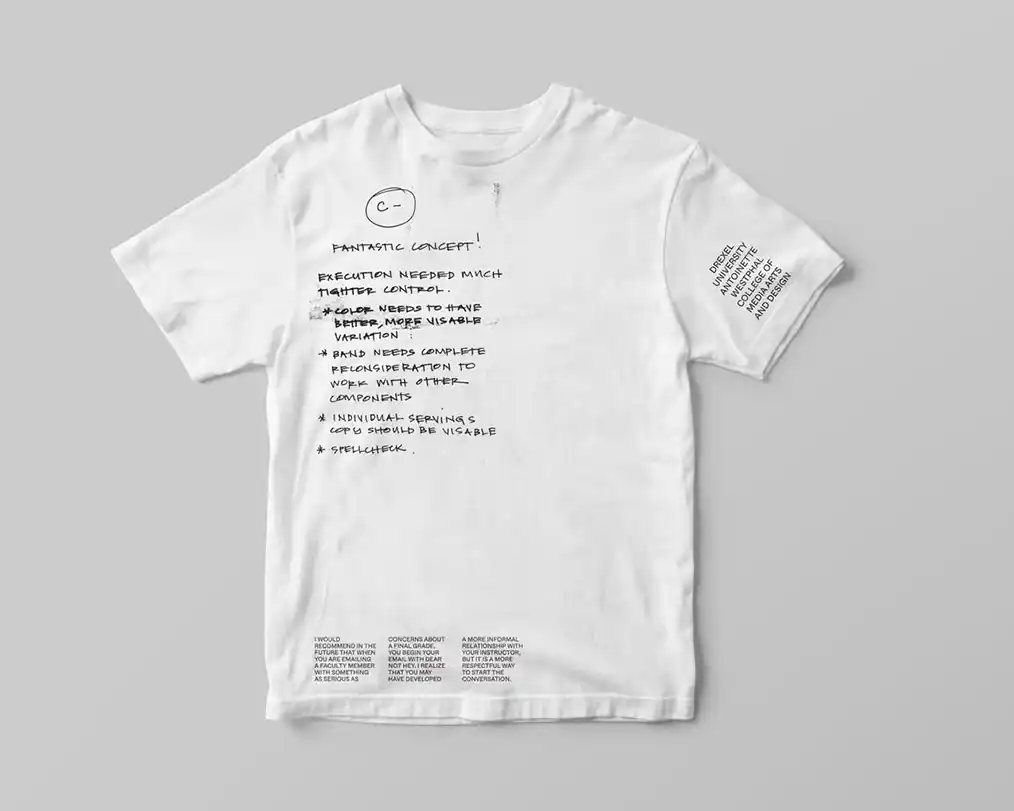
SIM: I love the sense of play you bring to your work, especially in your bumper stickers that you post to Instagram. Have you ever produced a run of them?
JP: The bumper stickers have been one of my favorite things to make recently. I can’t tell you the amount of times I’ve been driving with my partner Alexa, when I’ll randomly get an idea for a bumper sticker and need her to jot it down. I set a rule for myself that I’ll post them as a set of three. If I think of an idea for one or two, I have to challenge myself to come up with a third. At this point, I’ve made forty or fifty bumper stickers and haven’t produced any of them, but I need to. It’s one of those things where it’s not for anyone or anything, but if I make something for fun and someone likes it, I’m happy to have made it.
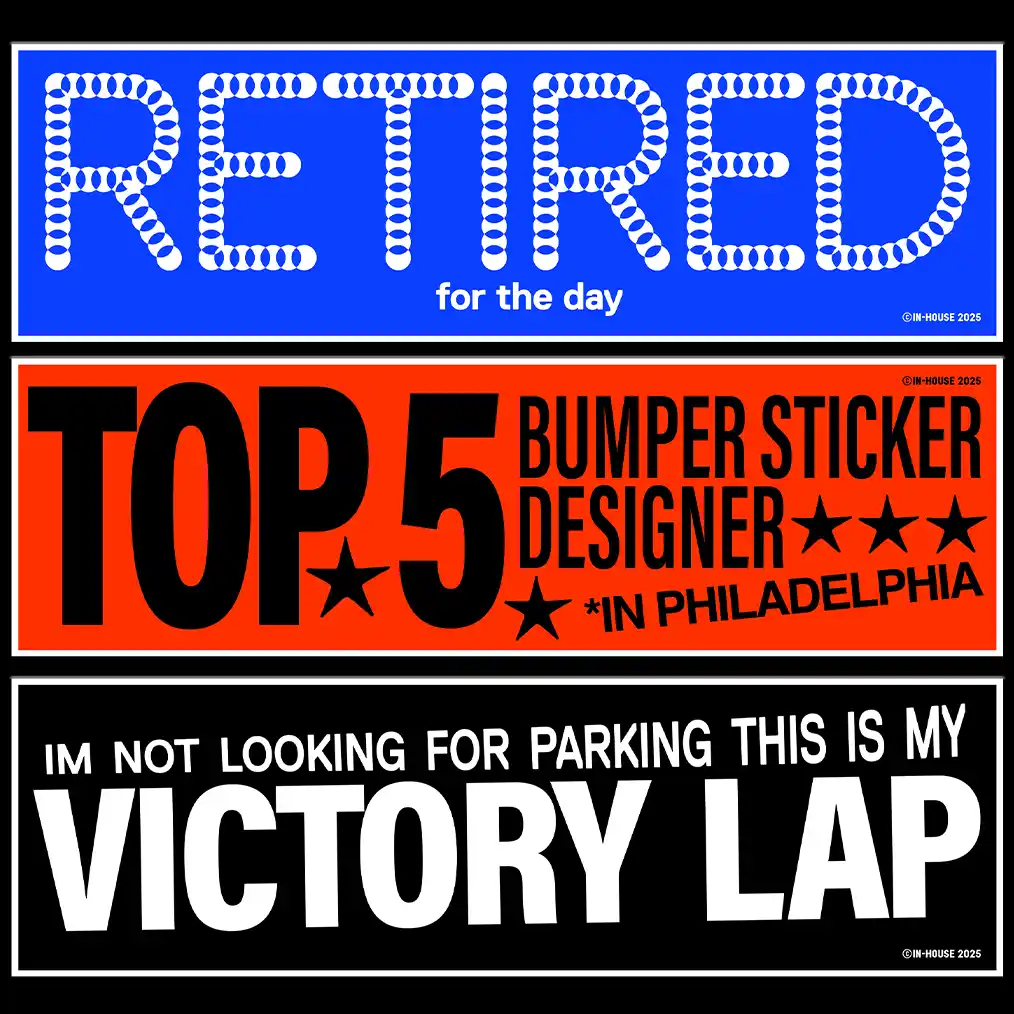
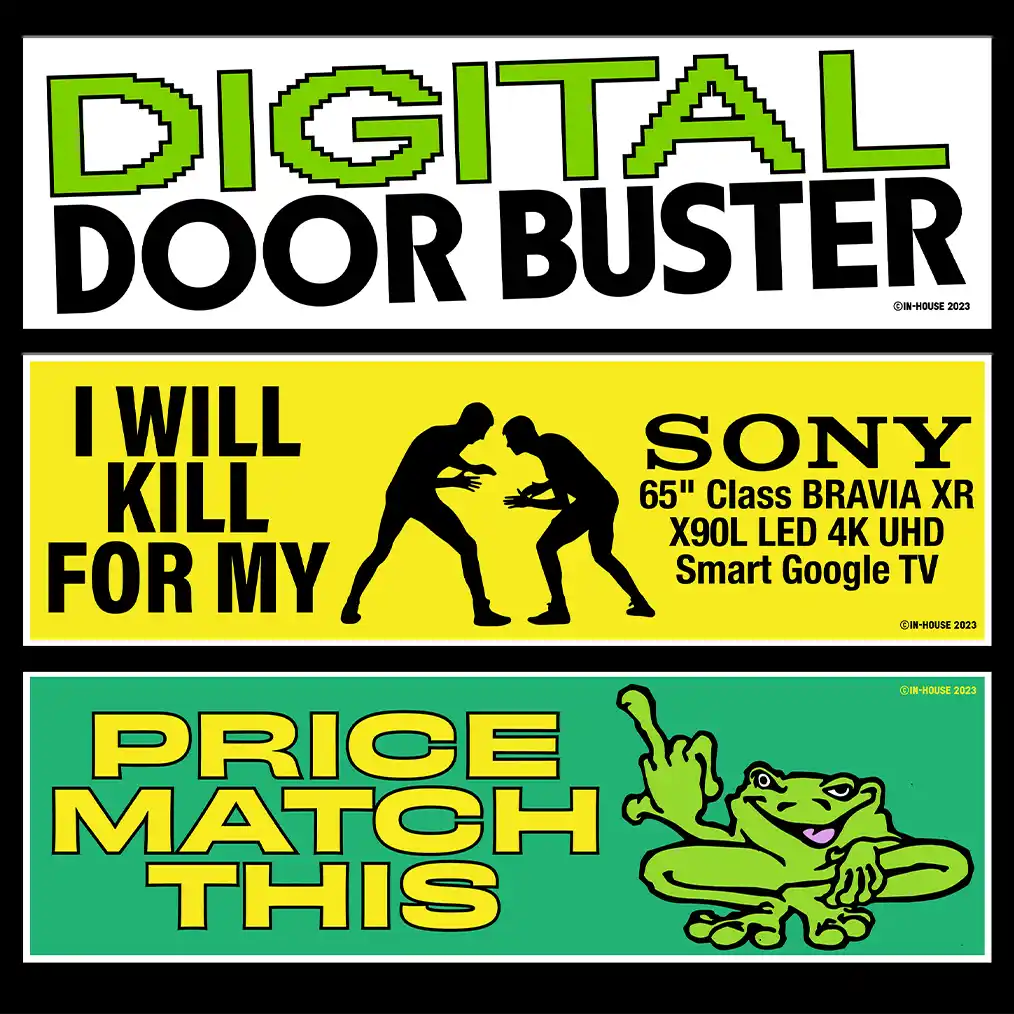
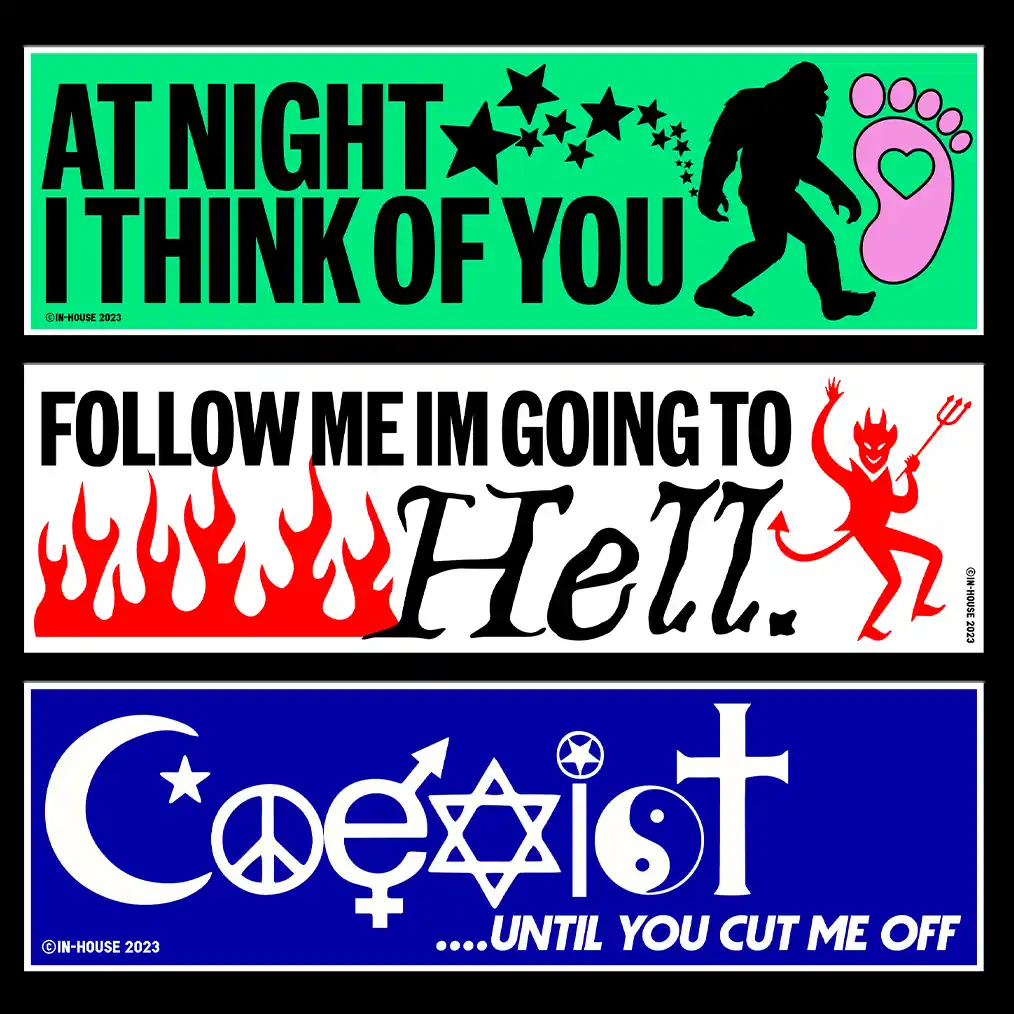
SIM: Driving is a great time to get ideas because you almost enter this meditative state.
JP: I’m very thankful when I have someone else there to write down my ideas or I think I’d crash my car trying to write down whatever gibberish pops into my head. I get a lot of my favorite ideas when I’m not sitting down with the intention to make something specific. A lot of what I make is just me enjoying the process of creating every day. I like to stay open to the process and whatever comes out, comes out.
SIM: Was there a part of your Drexel experience that helped inform your design process long-term?
JP: Doing house show fliers and album art has been a big part of my design process. I had a lot of friends in the music industry program at Drexel who would play house shows, and I’d make posters for them. I was just starting out and got to make a lot of stuff for friends that led to future projects. I’ve been collaborating with one of my friends from college, Gus Dapperton, since college, making things like fliers and album covers. As his career has grown, I’ve been able to design merch for him, which has been a ton of fun. I went to school with really talented, wonderful people, and I feel lucky to still be collaborating with a lot of the same people I’ve been working with since 2015 or 2016. I love working with musicians to bring their vision to life.
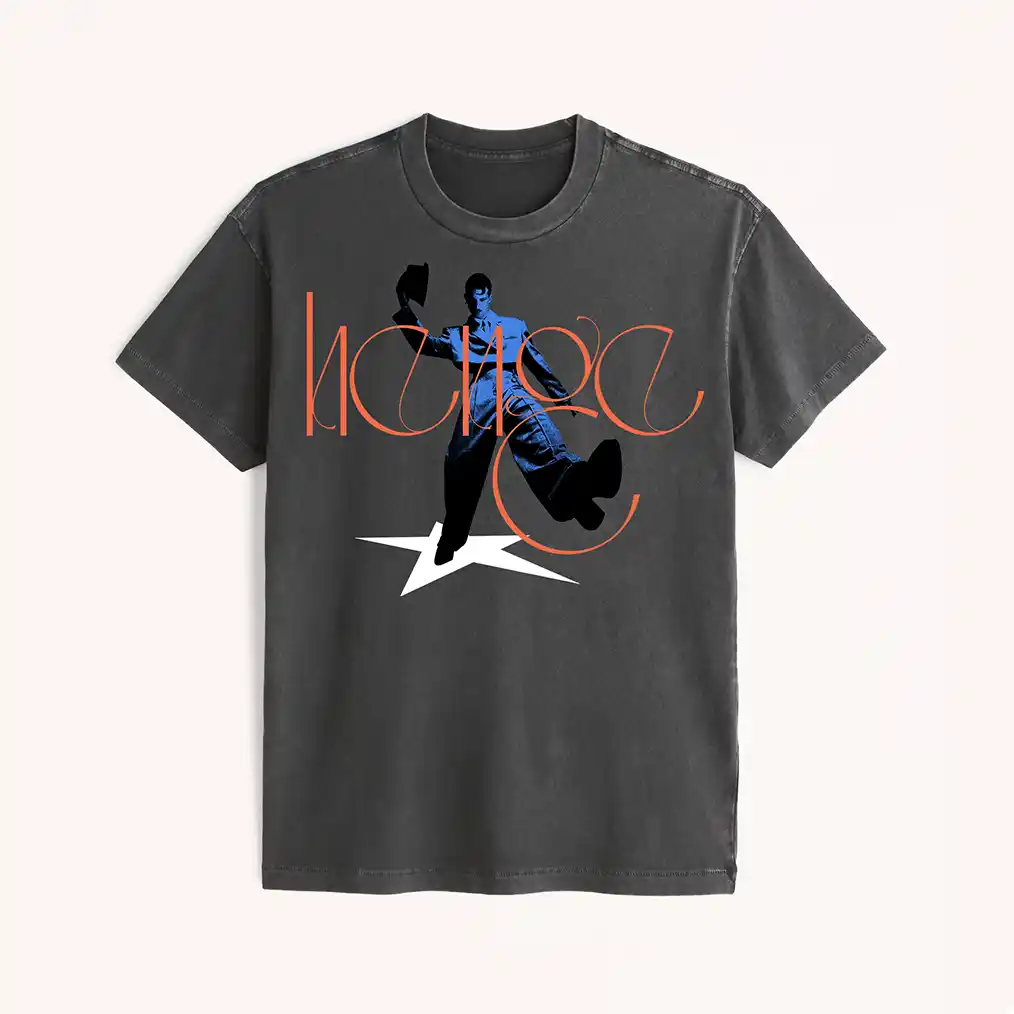
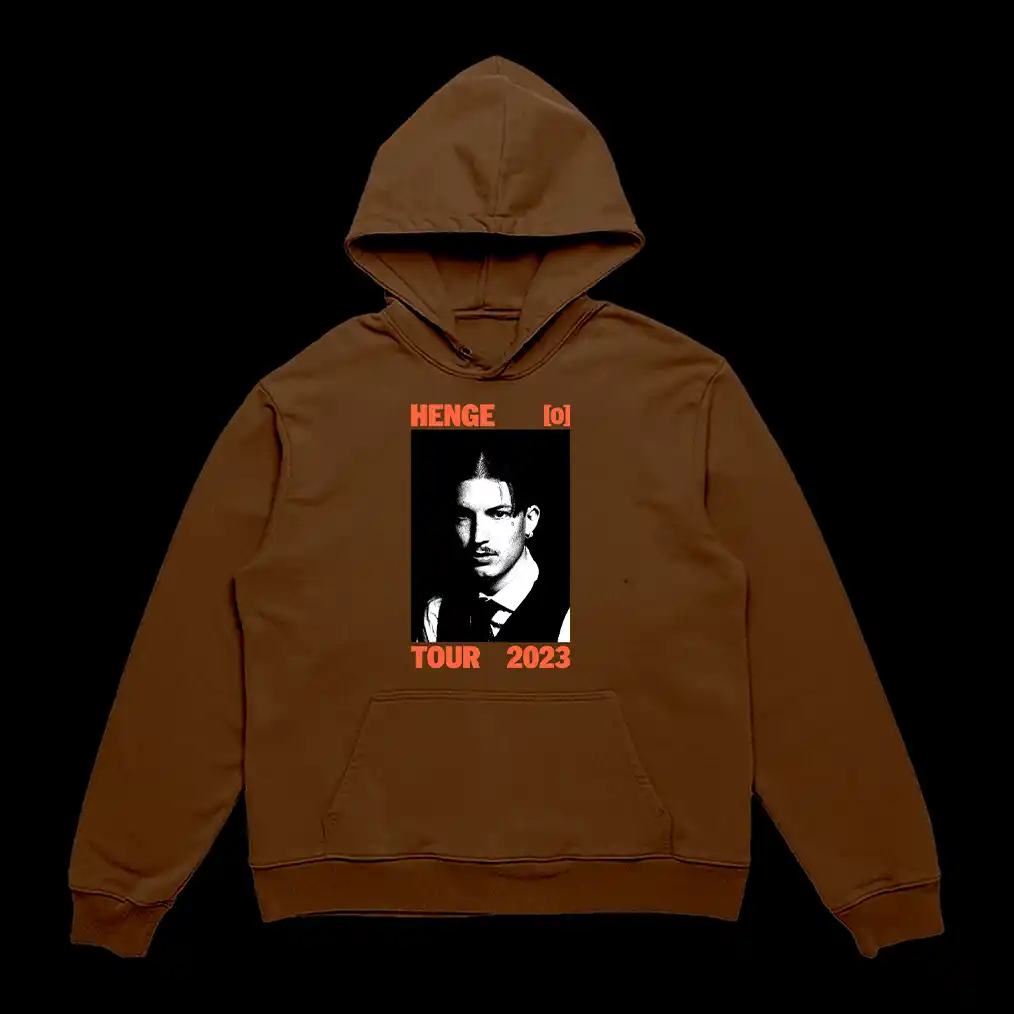
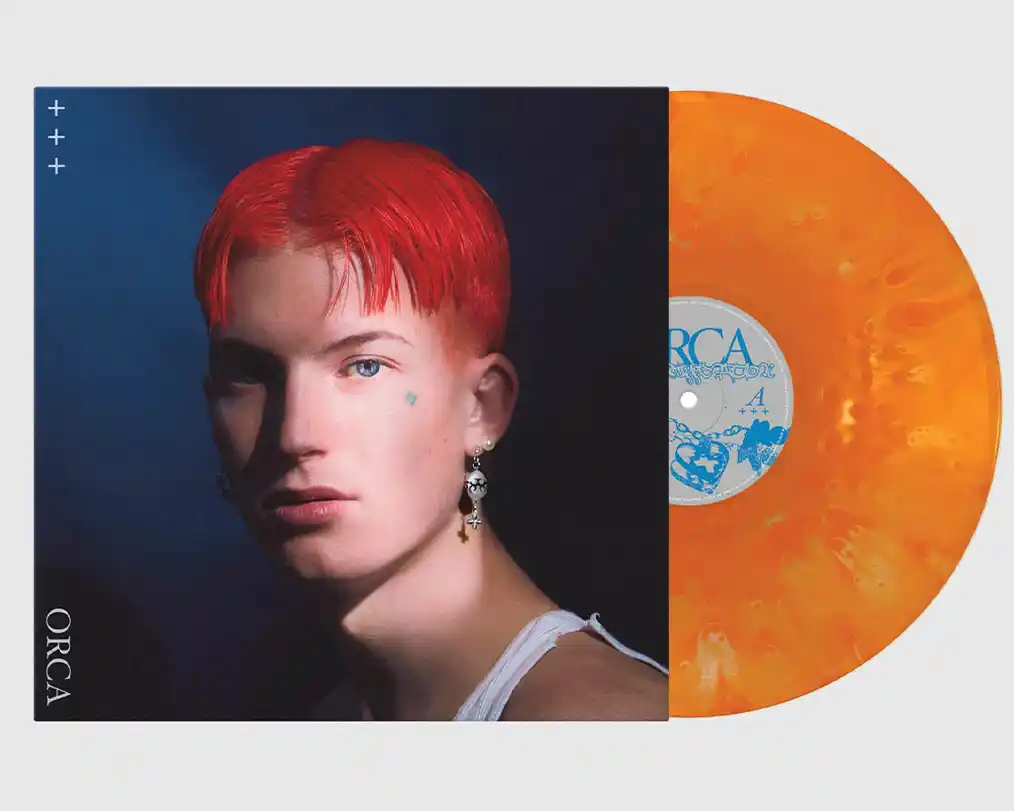
SIM: If you were to make an album cover for any artist or band, who would you want to design for?
JP: Damn. Any band? Honestly, right now, it would be Addison Rae. I’m a big fan of ‘Diet Pepsi’. I feel like she would let me do whatever I wanted, and I could make something crazy. That’s the first person that comes to mind. I’m a big Talking Heads fan, and I think their final record, Naked, has a horrible album cover that I’d love to go back and redo for them.
SIM: You’ll do the remastered version.
JP: I hope so. I love album art so much, and it’s always frustrating when an artist has a run of amazing albums and then something goes wrong. My partner is a huge fan of Fallout Boy, and I think they had some beautiful album art. Their second record, Infinity On High, is this little miniature of a sheep, but then you look at their 2015 album, American Beauty/American Psycho, and I think it’s one of the worst album covers ever made. It’s so funny when artists randomly put out a stinker after having a really strong run.
SIM: Is there music you enjoy listening to while creating or do you prefer silence?
JP: I tend to listen to instrumental or foreign language music because I can shut my brain off a little more. The playlist that I listen to the most is from a store out in LA called Mister Green. Before the art museum, I worked for Ubiq in Center City (now closed), and they collaborated with Mister Green. The playlist I listen to the most is their shop playlist, which is eight hours long and full of great jazz and Afro-beats.
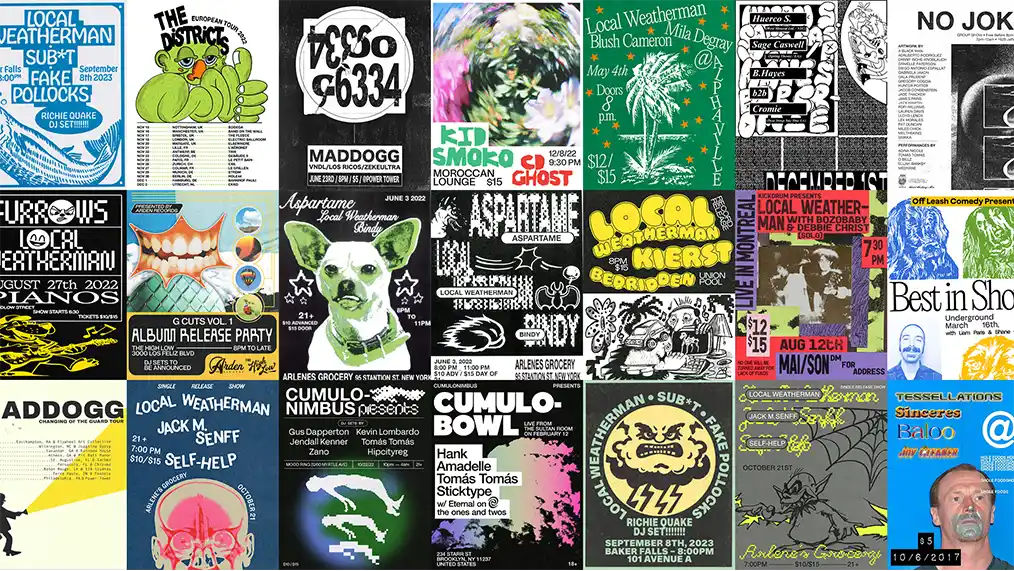
Freelance Advice and Creative Process
SIM: Last question – what advice do you have for all the freelance artists out there looking to pitch themselves?
JP: I think I’m very lucky to work with people I’ve built trust with over the years, but I also think that through Instagram, people are able to see my work or get a feel for what I do. Having a consistent online presence that people can keep up with is helpful because a lot of inquiries are people asking me to make something similar to what I’ve posted. I’m not great with public speaking, and I get pretty nervous when pitching myself. At this point in my career, I’m lucky enough to work with a lot of people I know. Having a full-time job allows me the flexibility to not rely solely on freelance, and I’m able to pick and choose the projects I take on and work on things I’m genuinely excited about. It might sound corny, but a lot of pitching is believing in yourself and knowing no one can do what you do. You have to have a certain level of confidence in your work because if you don’t believe in what you’re making, what’s the point?
SIM: Maybe that’s the natural progression after bumper stickers – motivational posters.
JP: I would love to. Bumper stickers exist in the same territory of motivation and mantras. The bumper sticker overlap is there. I like making things that are fun while still being sincere.
Want more stories like this? Browse Stories at Yowie featuring the creatives shaping Philadelphia and beyond.
Posted:
